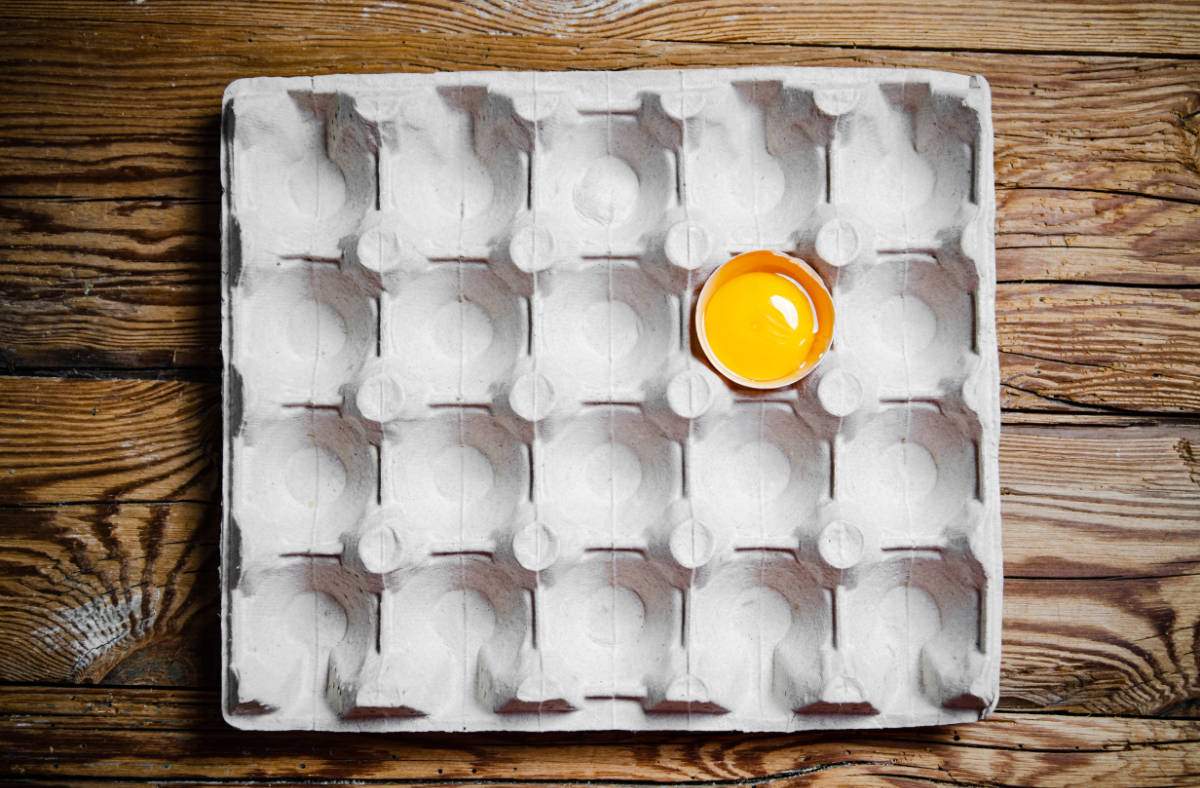A couple of simple questions and some pressure-reducing amendments to exercises can put clients with disc injuries on the path to recovery, writes physio and exercise scientist, Merrin Martin.
Sitting at work, happily researching this article, I come across so much information about disc injuries. It seems that ‘Dr Google’ is extremely good at defining what a disc herniation is, how it happens and when to go to a doctor, but not so good at providing helpful information regarding management of the injury. As I look further into what advice is accessible for management of a disc injury, the majority of websites veer towards the recommendations of bed rest, NSAIDS (anti-inflammatory drugs) and cortisone injections, with a visit to your GP if pain persists. In a nutshell, rest and drugs!
There are very few sites that encourage people to seek some hands-on treatment, and even fewer that provide any information about specific exercise programs for disc injuries to help keep clients active and strong.
So, let’s remedy that by focusing on some screening questions to ask your clients regarding low back pain, exploring exactly how discs behave when we exercise, and taking a look at how to provide a better program design to those clients at risk of disc injuries. If your client currently has a disc injury, remember to always refer them to a health care professional (such as a physio) for diagnosis and advice prior to starting their exercise program.
What are discs?
First up, a quick anatomy refresher: the spine is made up of many bones called vertebrae. Between each of these vertebrae lies a circular disc (intervertebral disc), which collectively act as shock absorbers and allow our spine to move. They are made up of a strong fibrous outer surface and a soft jelly-like middle part.
What happens when the disc fails?
A disc bulge, or herniation, occurs when the softer middle part of the disc bulges out through a weakness in the outer layer and presses on surrounding structures. The area around the bulging disc also becomes inflamed. Any disc in the spine can bulge, but the most common area is in the lumbar spine. Bulges vary in size and location and symptoms can vary.
What are the symptoms of disc-related lower back pain?
Firstly, perhaps unsurprisingly, back pain. This can be acute or come on over a period of time. However, the pain can also manifest in other ways, such as nerve root pain: when the bulge presses on one of the nerves exiting the vertebrae, you may experience leg pain as well as, or instead of, back pain. The most commonly affected nerve is the sciatic nerve. The pressure on the nerve can also cause numbness, pins and needles or weakness in areas of the leg supplied by the affected nerve (buttock, leg or foot).
What are the risk factors?
A number of things affect the likelihood of somebody experiencing a bulging disc:
- Ageing. The natural process of growing older results in an ongoing loss of water and proteins from the disc, increasing the risk of disc injury.
- Genetic. An inherited predisposition can cause accelerated degeneration of disc materials.
- Obesity. Excessive body weight places added stress on the spine.
- Lack of exercise. Sedentary behaviour results in a loss of trunk muscle/core strength and diminished spine support.
- Work activities. Long periods of sitting, lifting or pulling heavy objects, frequent bending or twisting, heavy physical exertion, repetitive motions, or exposure to constant vibration can add stress to the spine.
- Smoking. This habit limits the flow of oxygen-rich blood and nutrients needed for disc repairs.
- History. A personal history of back injury, previous herniated disc, or prior back surgery increases the risk of experiencing a bulging disc.
Identifying potential problems
Prior to starting an exercise program, all your clients need to be questioned regarding any physical problems they have experienced, so that you can tailor a program to suit them. Your current pre-activity questionnaire for clients may include the question ‘Have you experienced back pain?’ If your client ticks ‘Yes’, I highly recommend asking the following two questions to clarify things further:
1. What activities aggravate your back pain?
2. What activities ease your back pain?
Most personal trainers do not know which postures are more suitable for their client following injury and which postures may be potentially harmful. Each person is different. Remember, you are not diagnosing an injury, you are simply gathering information about your client that will be incredibly beneficial in terms of reducing the risk of further pain and helping them achieve their fitness goals.
CASE STUDY
One weekend three months ago, Jack, a 40-year-old male who works at a desk job, moved house. As he was lifting a box from the ground, he experienced intense back pain with some referred pain down the back of his leg. After initial acute injury management for a suspected acute disc injury, Jack has been visiting his physiotherapist regularly to gradually build up function and strength. He is now returning to his gym after this 3-month recovery to re-start his fitness program.
Previous to his injury, Jack enjoyed cycling, rowing and performing a circuit-style weights program that included seated row, seated bench press, seated shoulder press, lat pulldowns and leg press. His abdominal strength work included a range of sit ups and he would cool down performing a few stretches. Would you allow him to resume this program?
A diligent fitness professional would ask what postures aggravate, and what postures ease, his back pain. Jack tells you that his aggravating factors are: sitting at work for more than 30 minutes, sitting in a soft lounge, and driving to and from work. The postures that make him feel better include lying flat on his back, standing upright and walking. Knowing this critical information, there is no way that Jack should return to his pre-injury program.
Body positions affecting the spine and discs
So, what exercises would you recommend for a client like Jack that has experienced a disc injury? First, we have to know how different postures can increase pressure on the discs.
- The lowest disc pressures have been recorded in people that are lying in supine position.
- There is approximately 100kg of pressure on the discs in standing upright in good posture.
- There is approximately 150kg of pressure while standing in slight forward leaning posture (brushing the teeth posture).
- There is 220kg of disc pressure when holding a load and leaning forward (such as picking up weights off gym floor).
- The highest disc pressure (275kg) was measured while sitting with 20 degrees of forward leaning and with 20kg of load in arms (such as sitting and picking up children).
It seems the discs are put under a lot of load in sitting postures, even more load when a small amount of spinal flexion is added, and yet more still when hanging onto weights in this seated flexed posture. This body position, therefore, increases the risk of acute injury or aggravating a previous disc injury. This is important information to know, so we can start to think about formulating a new exercise program that can help Jack get back to full strength and function with minimal risk of re-injury.
Changing an exercise program to reduce risk and aid recovery from acute disc injuries
Please note: These are guidelines only. Every person is an individual. Always monitor and communicate with your clients regarding how their bodies respond to each exercise. Stop if they experience any pain and refer to a health professional.
A note on cardio training: Choose cardio equipment that helps to reduce impact on the lumbar discs and maintains the client in an upright position, e.g. include walking (no incline), cross trainer/elliptical trainer or swimming freestyle or backstroke. Avoid cardio such as cycling and the rower due to the seated spinal flexion postures.
Step 1: Correct breathing techniques
After experiencing low back pain, many people change their breathing patterns. Instead of using their diaphragm and performing lateral basal breathing, they tend to hold their breath and breathe apically (shallow breaths) using their accessory muscles of breathing or neck muscles. If you are not using the diaphragm, your core muscles and pelvic floor muscles will not be working functionally, and furthermore it will increase the likelihood of low back pain through increased abdominal pressures.
So, before strength training ensues, encourage your client to practice breathing techniques such as basal breathing in upright standing or supine lying positions to minimise load on the lumbar discs. Once they feel comfortable with this breathing, make sure they do not hold their breath while performing their strength training.
Step 2: Core and pelvic floor strengthening
Introducing a number of core exercises in a supine or prone position with a focus on keeping spinal neutral position is ideal. Have your client in supine to begin with, and educate them on the importance of being able to move their arms and legs in a number of planes while keeping their spine in neutral alignment. Supine core exercises that avoid spinal flexion (and thereby reduce discal pressure) include supine knee lifts, supine knee drops, leg slides, alternate arm and leg slides and pelvic bridge.
Core exercise in prone should also be included. Prone flutter, 4-point hand and leg extensions, and plank positions with arm and leg movements can all feature. Focus on breathing, core activation and controlling spinal neutral position.
Step 3: Pelvic stability strengthening
Once awareness of controlling spinal flexion using the core muscles has been established, we can start to introduce more global muscular strengthening. Exercises that strengthen gluteus maximus and latissimus dorsi (the posterior oblique system), gluteus medius and quadratus lumborum (the lateral system), and adductors and oblique muscles (the anterior oblique system) should now be included. Care should be taken to avoid any sitting postures or forward bending weight postures to ensure safe exercise guidelines for those clients who have experienced an acute disc injury.
Some good alternative examples might be:
- standing lat pull down to replace seated lat pull down
- wall squats/smith machine squats to replace leg press
- planks to replace sit ups
- lunges to replace deadlifts
- standing cable rows to replace seated rows.
In all of the above exercises, the same muscle groups are working, however the posture the client assumes is a spinal neutral, upright standing or prone position.
Step 4: Mobility and stretches
Care should be taken when trying to stretch out the low back to reduce tightness. The discs seem to become aggravated with end range rotation, such as a lumbar spine rotation stretch, so holding these stretches and pushing into the end range is not recommended. Alternatively, a gentle side-to-side knee rocking motion with feet on the ground will achieve a similar result without the load on the discs.
The worst stretch for acute disc injuries is a seated hamstring stretch. Not only is it pulling the client into sitting and spinal flexion, it also increases traction on the sciatic nerve which may aggravate some clients. Again, replace this stretch with your client in a supine position, knees bent, and use a rope or towel around the foot to perform a bent knee hamstring stretch.
Take care
These simple guidelines apply to most clients that have experienced an acute disc injury at some stage in the past. There are other types of disc injuries – some that herniate anteriorly, some that are chronic and degenerative and many that have been injured in conjunction with multiple other structures. The information in this article does not apply to all disc injuries, so take care and refer when necessary.
In addition to screening new clients, you should also screen those that resume their training with you after some time away – remembering to ask which daily activities aggravate their pain and which activities help to ease or reduce it. Don’t be afraid to modify the exercises to keep your clients strong and help prevent future disc injuries.
Merrin Martin, BAppSc (Physio), BSpSc (Ex.Sc) is the founder of Active Anatomy Physiotherapy & Health Professional Workshops in Sydney. An experienced physiotherapist, exercise scientist, health educator and clinical Pilates instructor, Merrin is a highly respected expert in exercise rehabilitation. activeanatomy.com
REFERENCES
Schoenfeld, A.J. & Weiner, B.K. (2010) Treatment of lumbar disc herniation: Evidence-based practice. International Journal of General Medicine. 3:209-214. Published online Jul 21 2010.
John L. Zeller, MD, PhD; Alison E. Burke, MA; Richard M. Glass, MD (2006) Herniated Lumbar Discs
JAMA. 2006; 296(20):2512.


